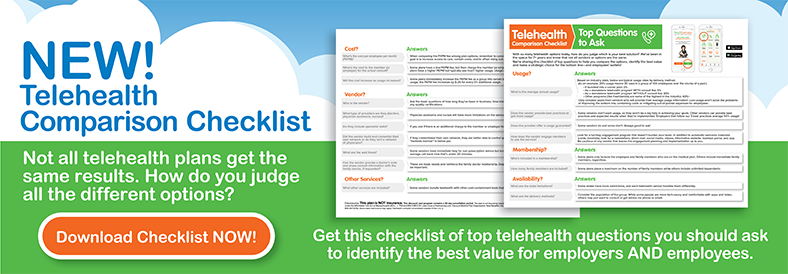IN EMPLOYEE BENEFITS, COMMUNICATION IS KING: 3 TIPS
How often do you hear employees comment about how easy it is to understand their health benefits? Yeah, me either. Confusion often plays a significant role in the employee’s effort to understand the changes and complexity of their benefit plans. This is especially true in today’s world of benefits.
Employees are expected to be better healthcare consumers which means employers are presenting not only a new health insurance plan, but often wellness incentives, consumerism tools, voluntary elections, etc. It can quickly become frustrating for both the employee and the employer.
How can employers encourage understanding, incentivize use and make it all easier and less stressful? I’m sharing three tips for employers to consider in developing a benefits communication strategy.
1. Keep it simple
Personalization is often the key to making a message simple and clear. When describing how a benefit will contribute to an employee’s quality of life, a relevant story is very effective. For instance, an employer wants employees to use a telehealth option before resorting to a more costly urgent care or emergency room visit. Describing an after-hours scenario where a need is easily met by a phone visit with a doctor makes the point. The employee sees the value of telehealth to provide convenient and speedy access to care with less out of pocket costs. Plus, the employer can explain that avoiding those costly visits reduces health plan costs over the long haul as well. A win-win for everyone.
TIP: Beware of using health insurance and healthcare jargon that employees don’t understand. Don’t assume your audience knows the common terms – describe them simply (copay, deductible, out-of-pocket max, etc.). Ask an insurance “outsider” to review and red line your communications to ensure they make sense before they go out.
2. Keep it catchy
Any simple, clear and personal message can be completely overlooked if it doesn’t stand out. So, picture employees as consumers. They get bombarded with ads, emails, and calendar invites every day. The message, whether delivered in meetings, via company intranet and enrollment site, or by email, must be creative and stand out. A benefit may be fantastic and the exact answer an employee needs, but the employee overlooks it because it looks like everything else. Should we expect an employee to understand or use a benefit they haven’t even noticed? So give them a reason to pay attention. Use testimonials or video messages from the owner or CEO. Selecting a vendor that has developed a unique brand and is able to deliver fun and memorable content (i.e. videos, blogs, flyers, etc.) will also save the HR team enormous amounts of time and energy, and get the results desired.
TIP: When you hear fun or positive stories about how employees have used their benefits, ask them to share in a meeting or write up the story to share in a benefits communication piece.
3. Keep it consistent
Historically, benefits have been delivered and communicated once a year during open enrollment. Some materials are distributed, new benefits are explained and employees are given enrollment instructions. Typically that’s the last time employees hear the message until the following year. Most employees want benefits communications throughout the year. Content messaging and information should be delivered to employees as often as possible without being overwhelming. Include it in the company newsletter or send a simple message from HR. Employees should get used to seeing fun and interesting information in their inbox (whether personal or work email). Mix it up and make sure it stands out. But always strive to help the employee understand the benefits and how best to use them.
TIP: Create a communication calendar and stick to it. Start slow and easy with something you know you can accomplish – maybe just one email per quarter. You can work up from there. Also, consider using carriers that have turnkey communication programs.
So what’s the bottom line? Employees are confused about their health benefits. That leads to ineffective use of the benefits. Simple and catchy content delivered consistently will help employees become smarter consumers of healthcare and more productive at their jobs. Employers should consider carriers and vendors in this light. They need to be partners with HR in establishing a clear communication strategy that meets the goals of the benefits provided. Outstanding benefits without such a strategy will fall short of expectations and likely be a lose-lose situation for the employer and its employees.
Now it’s your turn! What effective communication strategies have you used for employee benefits? Comment below or email me at dan@freshbenies.com.
















